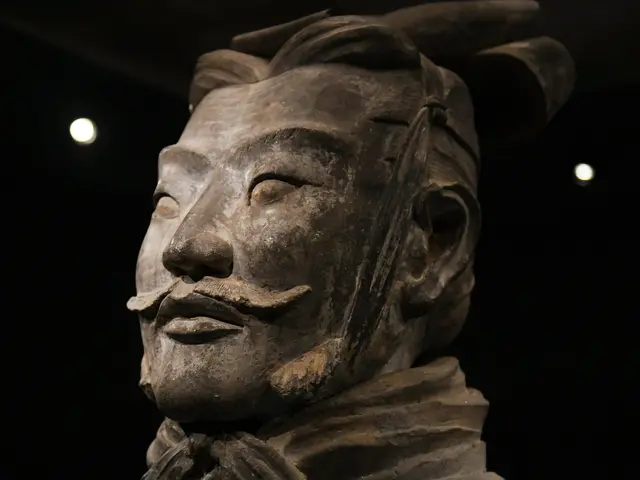The Mausoleum of Qinshihuang, known for the famous army of terracotta warriors, in northwest China's Shaanxi Province, received 39,800 tourists during the five-day Labor Day holiday, the museum said on Wednesday.
Tourists were required to book tickets online, as the maximum capacity per day is 8,000 people. This is part of the epidemic control efforts following the novel coronavirus outbreak, said Tian Jing, vice curator of the museum.
To enter the museum, visitors needed to have their information verified by scanning a QR code, had their temperatures checked, and they had to wear a mask.
The museum reopened its doors on March 25 after suspending operation for two months due to the epidemic.
Discovered in 1974, the army of terracotta warriors was built by Emperor Qinshihuang of the Qin Dynasty (221 B.C.-207 B.C.), who unified China for the first time.
As one of China's biggest tourist attractions, the museum saw over 9 million tourists last year, setting a maximum record of 114,000 daily visits.
The Labor Day holiday, which ran from May 1 to 5, was the first long holiday following the epidemic. Data released by the Ministry of Culture and Tourism showed Chinese tourists took over 100 million domestic trips in the first four days of the holiday.
While people have been longing for travel after being stranded at home by the virus for a long time, online reservation has become an important measure to resume operation of resorts and control the number of visits to avoid cross-infection and ensure the safety of tourists.
Including the Mausoleum of Qinshihuang, more than 300 tourist resorts in Shaanxi have required tourists to book tickets online in advance.
According to the online travel agency Trip.com, more than 4,000 tourist destinations across the country require online reservations, including the Palace Museum, also known as Forbidden City in Beijing, which had all its 25,000 tickets booked for the holiday in less than 12 hours.
The novel coronavirus has forced tourists destinations in China to strike a balance between controlling number of visits, boosting consumption, while still providing pleasing enough tours.
Zhan Dongmei, a resort researcher from the China Tourism Academy, said as the progress of epidemic control and work resumption is different between cities, scenic spots should adopt differential measures after being assessed in a scientific manner to ensure its safe reopening.
Zhan said the resorts should determine their maximum tourist capacity based on national, local, and industrial regulations, the characteristics of resorts, and the varied epidemic prevention situations.
 简体中文
简体中文

